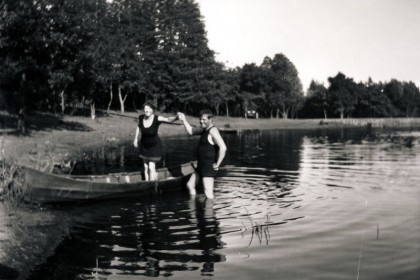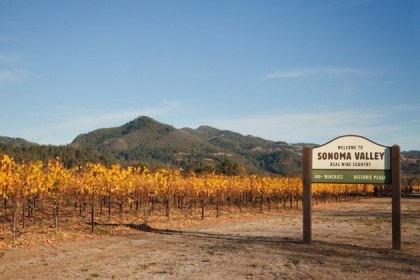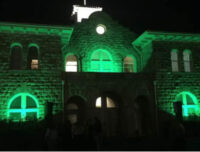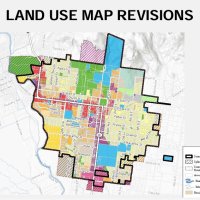By Jonah Raskin | for The Sonoma Sun
Lila Weinberger, the cofounder and co-owner of Readers’ Books, noted not long ago that, “If you offer wine and cheese at an event in Sonoma, people will be sure to come.” Indeed, it doesn’t take much. There was no cheese, but there was a bottle of Cabernet and another of Sauvignon Blanc at a recent launch at Readers’. By the end of the evening, the bottles were empty, the books sold and autographed by the author, Jeff Falconer, who told the audience, “Meditation is an internal energy massage.”
In Sonoma, wine is not only at Readers’, but also in bars, bistros, and supermarkets. It’s at bachelor, bachelorette and birthday parties, and at weddings that are often held at winery “event centers.” One can’t drive a mile in any direction from the plaza and not encounter Chardonnay and Pinot Noir vines squeezed closely together and cultivated to maximize the weight of the crush and the alcohol level.
From all over the world, tourists come for a taste of what’s called “Wine Country Living” that has been created by the “hospitality-industrial-complex” which includes spas, restaurants, vacation rental and tasting rooms.
Some observers call the complex, “The Juggernaut.” All-too-often, politicians are beholden to it, while public relations employees sing its praises. Sly as a fox and slippery as an eel, the Juggernaut employs thousands of people who work in fields, warehouses, hotels, kitchens, dining rooms and on assembly lines that turn out millions of bottles of red, white, rosé and sparkling wines that bear the name Sonoma and that are exported around the world. Sometimes the wine in the bottles is made from grapes grown in the Central Valley and South America, and sometimes executives in France and China call the shots.
Still, if the valley is known for one thing, it’s wine, and, while some rejoice at the renown, others complain about what they call “Disneyland on Alcohol.” On the whole, the industry fails to live up to the standards it promotes in advertising and publicity.
Most visitors, and many locals, too, have never heard of the “hospitality-industrial-complex” or its cousin, the “restaurant-industrial-complex,” where female workers are often sexually harassed, managers and owners filch tips and the lucky few gain valuable skills and climb the corporate ladder.
The connections between wineries, lodgings and restaurants are largely invisible. No tourist map shows the links, though they’re no less real. Sometimes a restaurant doesn’t advertise its presence, or post a name outside the entrance.
At the Edge
One such place exists across the street from Readers’ Books. On the outside, the building looks like a well-kept Victorian. A sign says “Private.” The building is owned and operated by Stone Edge Farm Vineyards and Winery that produces Bordeaux-style wines. Close your eye, sip an Edge Cabernet and eat the gourmet food prepared by the “culinary director” and cookbook author, John McReynolds, and his crew and you might think you’re in France, though in France wine is viewed as a beverage for everyone, not the elite.
Like most wineries in Sonoma, Stone Edge wants customers to sign up for its wine club, become “collectors” and receive regular shipments of Cabernet. One hundred percent of Stone Edge sales are direct to consumers. The middleman is eliminated. Small wineries are dependent on direct sales and on events at wineries; the big distributors don’t bother with them.
To collect collectors, Stone Edge goes to extremes. No walks-in allowed, though one can phone ahead and make a reservation with the capable maître de, Larry Nadeau, who perfected his craft at Thomas Keller’s world-renowned Napa restaurant, The French Laundry. Like Keller’s Laundry, Stone Edge sells exclusivity, luxury and a sense of entitlement. The cuisine is excellent, the service impeccable and the price beyond the budget of most locals, and even many tourists, though it’s certainly affordable for people who own second homes in the hills and who are helping to make Sonoma the essence of exclusivity.
In addition to Nadeau and McReynolds, the team at Edge includes Frieda Guercio, the director of membership, Philippe Thibault, the gregarious French-born director of hospitality and Dorothe Cicchetti, the savvy director of sales & marketing, who told me “This is not a tasting room; it’s out of the box and a whole experience that illustrates the Stone Edge philosophy that food and wine go together.”
Edge is definitely a world apart from many of the tasting rooms on the Sonoma plaza that tend to look and feel the same.
Elizabeth Slater teaches a Santa Rosa Junior College class on direct sales to consumers. She also visits tasting rooms from California to Virginia. “The experience is the same from place to place,” she told me. “People who start a vineyard and a winery think they’ll be different, but they usually aren’t.” She added, “It’s an industry of passion, not reason. After all, it’s not a necessity to drink wine.”
The daughter of immigrants, Cicchetti grew up in Sonoma, but has been forced to move because there’s very little affordable housing here. Indeed, like many women and men of her generation who work in the Juggernaut, she lives in Napa, where, she says, “you get more bang for the buck and where there’s more going on than in Sonoma, especially if you’re young.”
Cicchetti loves her work. She also admires Leslie and Mac McQuown, who own Stone Edge, and who aim to run their farm and winery sustainably. Still, she says that Sonoma suffers, from “the small town disease.” She adds, “it once was blue collar and not elitist. Now, there are a lot of wealthy transplants.”
Cicchetti doesn’t blame anyone. She also explains that even if you can’t afford to purchase Edge products you can “appreciate the art, the beauty and the craftsmanship” that go into the creation of the vineyard, the winery and the wines.
The use and abuse of water
Still, it’s relatively easy for environmentalists to point a finger at the Juggernaut that has gobbled up huge tracts of land, captured vast watersheds, made hospitality into a skill that’s taught at schools, and, to a large extent, turned Sonoma into a mono-crop valley where agricultural diversity is hard to find.
The issues that relate to land and water—which are at the nub of the Juggernaut—are more pronounced now than ever before. With increased competition for real estate and consumer dollars, the issues are likely to intensify. Still, they’re not new. Like the Roman Empire, imperial Sonoma wasn’t built in a day. There’s a history of conflict about the use and abuse of water that goes back more than a hundred years to the days of Jack London, the best selling American novelist, and one of the fathers of the hospitality-industrial-complex in Sonoma.
 At Beauty Ranch, his 1,000-acre-plus-estate and private resort in Glen Ellen, London aimed to create a theme park, a utopian community and a thriving economic engine. Water was a scarce resource in his day, so much so that when he built a dam across a stream that crossed his property—and created a reservoir—his neighbors sued him. They lost. He won.
At Beauty Ranch, his 1,000-acre-plus-estate and private resort in Glen Ellen, London aimed to create a theme park, a utopian community and a thriving economic engine. Water was a scarce resource in his day, so much so that when he built a dam across a stream that crossed his property—and created a reservoir—his neighbors sued him. They lost. He won.
For the next hundred years, water would play a big role in local politics. The fragility of the hydrological system was revealed by the drought of 2013-2016 that prompted emergency conservation measures in Sonoma and all across California, where wealthy communities gobbled more water than poorer communities, and where some communities had to have bottled water imported by truck.
The heavy rainfall in the winter of 2016-17, and then the fires of October 2018, pushed the water crisis aside, but it’s still here and won’t go away.
James Conaway tells much of the story in his new book, “Napa at Last Light: America’s Eden in an Age of Calamity,” in which he also offers insights into Sonoma. “The wine industry was in cahoots with banks,” Conaway writes. He adds that it was “a great business model: sell wine, wine tastings, food, and events, with ever increasing tourism as the surefire generator of bodies and therefore revenue.”
The four-year drought revealed social and economic fissures as well as threats to the environment. Indeed, the drought generated a boom in the business of well drilling in Sonoma Valley. Landowners with two and three wells on their properties hired companies like Weeks Drilling and Pumps to dig deeper and deeper because wells increased the value of the land.
Preserving the rural character
 The drought also energized ecological and environmental groups and organizations, including Neighbors to Preserve Rural Sonoma County, and Wine and Water Watch, that educate the public about the wine and tourist industries. The most vocal members have come from western Sonoma County and from Napa, though longtime Kenwood resident Katy Pons has played role at Wine and Water Watch. Moreover, as the president of Valley of the Moon Alliance, founded in 2002, she monitors the growth of wineries, event centers, resorts, restaurants, and traffic along Highway 12 in and around Kenwood.
The drought also energized ecological and environmental groups and organizations, including Neighbors to Preserve Rural Sonoma County, and Wine and Water Watch, that educate the public about the wine and tourist industries. The most vocal members have come from western Sonoma County and from Napa, though longtime Kenwood resident Katy Pons has played role at Wine and Water Watch. Moreover, as the president of Valley of the Moon Alliance, founded in 2002, she monitors the growth of wineries, event centers, resorts, restaurants, and traffic along Highway 12 in and around Kenwood.
At last count, there were 19 tasting rooms between Landmark at Adobe Canyon Road to Manzanita Creek 1.6 miles away. There are six more tasting rooms, including Ledson, between Adobe Canyon and Oakmont Drive. Moreover, there are parking and safety issues at Café Citti. Indeed, tipsy pedestrians walk along the highway with wine glasses in hand.
“Wineries receive permits for events and then exceed the number of events that are stipulated,” Pons explained. “There is no enforcement by the county of the rules, no reliable data and no one checks up on the wineries.” Pons and VOMA have battled the construction in Kenwood of a 50-room-hotel, with spa, bar, plus a 125-seat restaurant and a winery. It’s called Sonoma Country Inn and it epitomizes the hospitality-industrial-complex.
Pons is also troubled by Kenwood Winery’s plans to build a new 4,232-square-foot tasting room and increase the number of “agricultural promotional events” from eight to fifty a year and that would bring thousands of additional tourists annually to her neck of the woods. One might say that the whole idea of an “agricultural event” as been perverted.
Padi Selwyn, a former vice president in charge of marketing and PR at the Exchange Bank, is the co-chair of Neighbors to Preserve Rural Sonoma County. She argues that the board of supervisors has dropped the ball when it comes to tasting rooms.
“They end up protecting the wine industry by doing little to address citizen complaints and citizen groups’ proposals for reasonable regulations that deal with cumulative impacts, safety, noise and quality of life issues relating to tasting and food pairings,” she explained. “They have ignored the county’s general plan on food service, road safety, and scenic and open space.”
Selwyn adds that Sonoma County’s general plan “prohibits restaurants in agriculturally-zoned-land,” and yet, as she also notes, “a few years back, St. Francis Winery in Kenwood was voted the #1 restaurant in the U.S. by Open Table.” (That was in 2015).
Equilibrium is Selwyn’s rallying cry. “We believe it’s in everyone’s best interest to balance economic growth with resource protection for the benefit of future generations,” she told me.
Should local residents be optimistic or pessimistic about the future of the Valley? Teri Shore, the North Bay regional director of the Greenbelt Alliance offers reasons for both hope and despair, or at least anxiety.
Of the 91,563-total-number of acres in Sonoma Valley, only 8,236 are protected, and that’s subject to change; the battle for open space and wild lands goes on. A 2017 report from the Greenbelt Alliance notes that all over the Bay Area, “Skyrocketing housing costs have led to development proposals on open space and farmland.”
Four-hundred-fifty-square-miles, nearly ten times the size of San Francisco, are at risk. What happens in the city by the Bay and in San Rafael and Sacramento affects what happens in Sonoma. The crucial fact is that between 2000 and 2012 farmland in Sonoma County decreased eight percent, while urban land increased by seven percent.
Shore says that one area in Sonoma that’s at risk is located around Eight Street East, near the airport and the cluster of warehouses. “Developers will want to go there,” she said. She added that Greenbelt Alliance supports the idea of affordable housing inside city limits, not expansion.
Creating space
Despite the crisis, I’m continually surprised by the enthusiasm of young farmers who arrive in Sonoma determined to grow organic crops and practice genuine sustainability. Many don’t survive. Others move to places where land is less expensive. Still others, through ingenuity and persistence, settle here and create networks that enabled them to thrive. The generosity of the community helps them. I’m heartened by the example of a friend who grew grapes and made wine for decades, and who is now growing and selling vegetables and cannabis. He won’t be deterred.
Locals and tourists, too, can conserve water, respect the environment, treat workers with respect and buy fruits and vegetables from Sonoma Valley farmers. After all, shopping and eating can be ethical choices that support agriculture in a place that, alas, looks and feels increasingly like Disneyland on Alcohol.
Jonah Raskin is the author of “Field Days: A Year of Farming, Eating and Drinking Wine in California” and the editor of “The Radical Jack London.”








Well done piece – thank you for putting it all into perspective.
Well done. Thanks for putting it all into perspective. And there are some wineries that are better than others at protecting land and water. It’s important to distinguish the good neighbors from the bad.
“Wineries receive permits for events and then exceed the number of events that are stipulated,” Pons explained.
In Napa County those who violate permits are not only forgiven by the Board of Supervisors but their permits are renewed to include even greater capacity. Which causes the price of land to increase in value, which causes it to finally become so expensive that it is impossible to actually grow and sell enough grapes off of it to pay the mortgage. And then it’s sold to someone else who doesn’t know about the carrying capacity of the land. Land speculation, I think.
The amount of groundwater will put an end to the speculation. At some point there won’t be enough to grow grapes on all planted parcels, certainly not marijuana/cannabis. Maybe this is when dry farming will come back into fashion… but it will be pretty hot by then. Date plantations, I guess.
Thanks, Jonah. You’ve provided more food for thought.